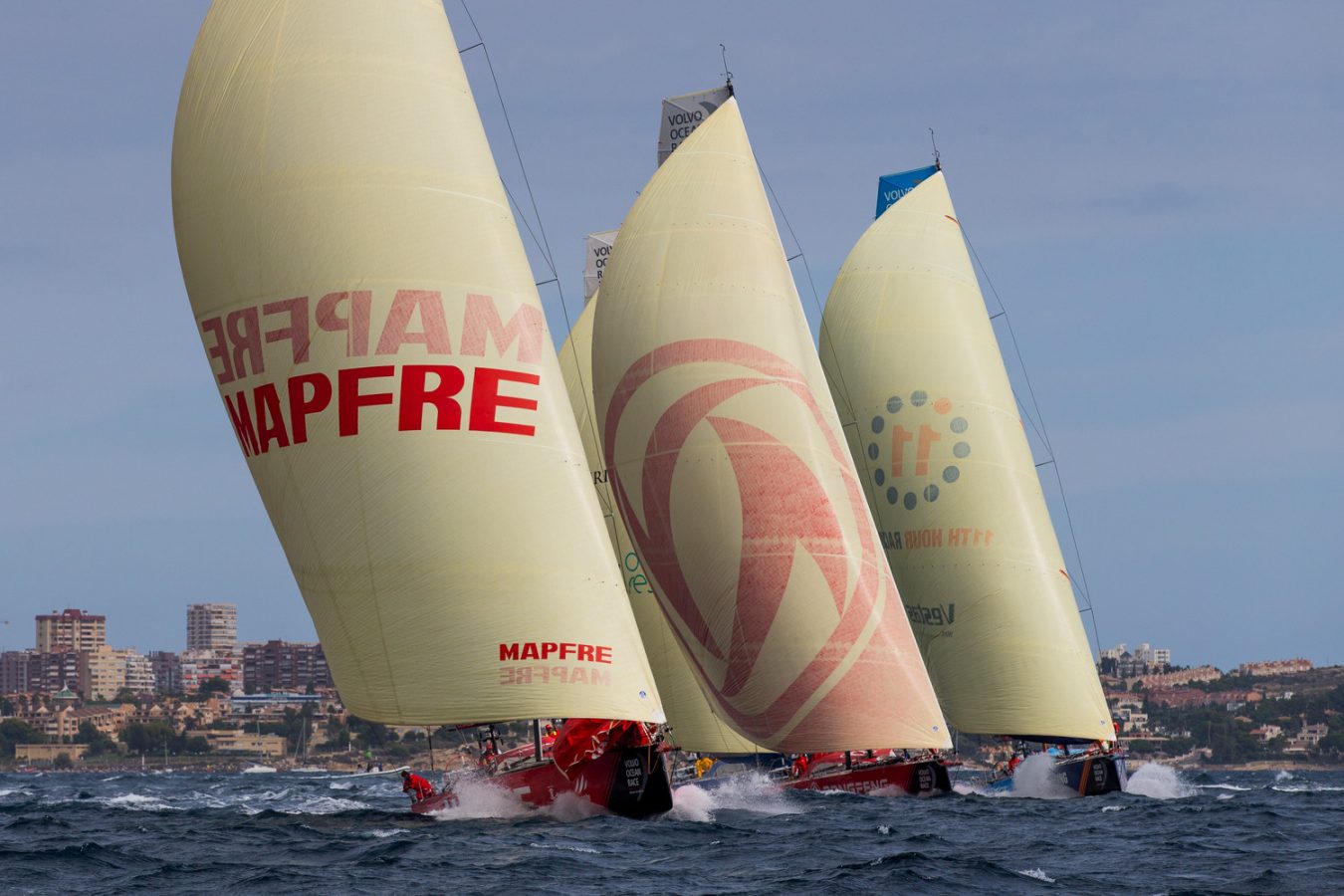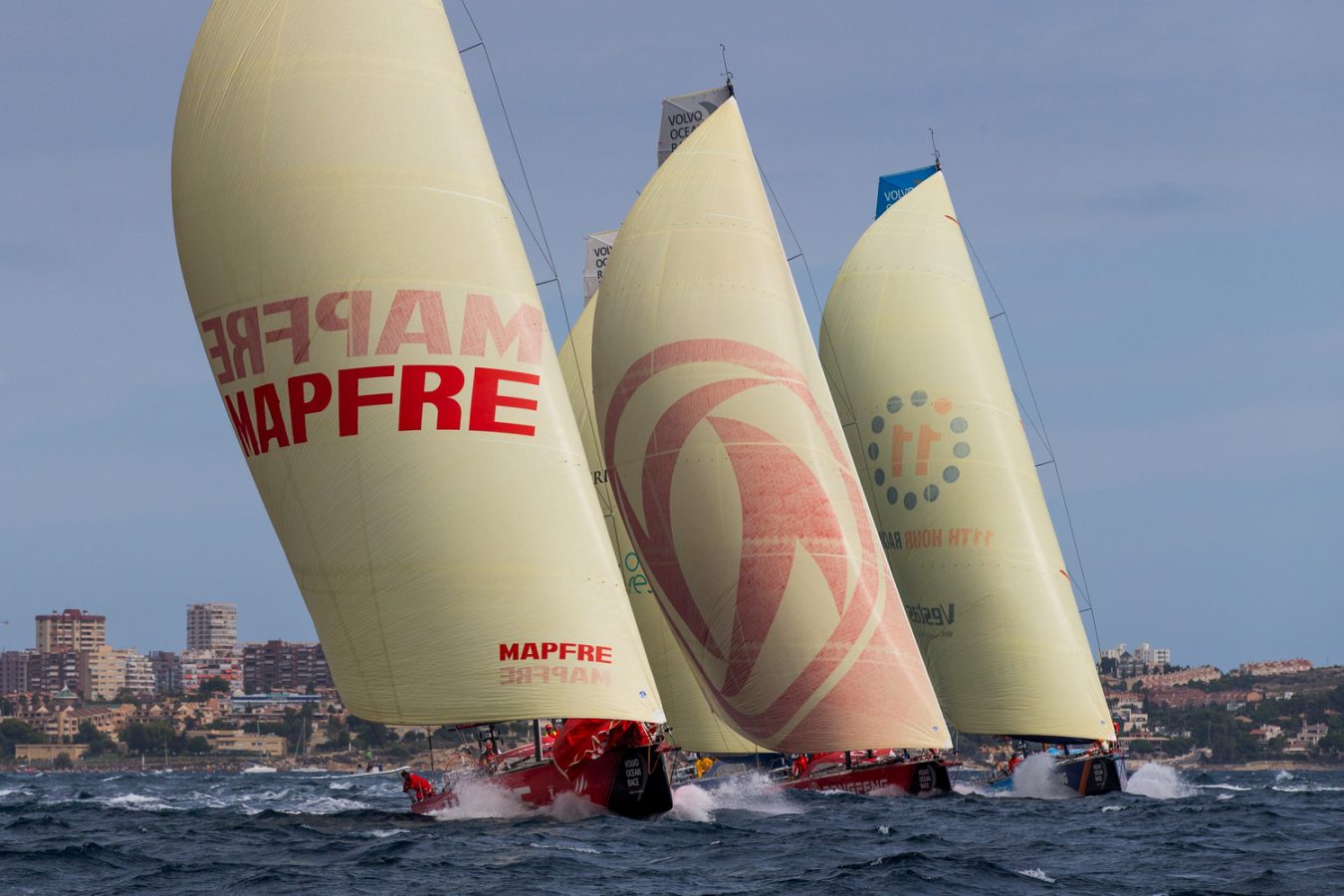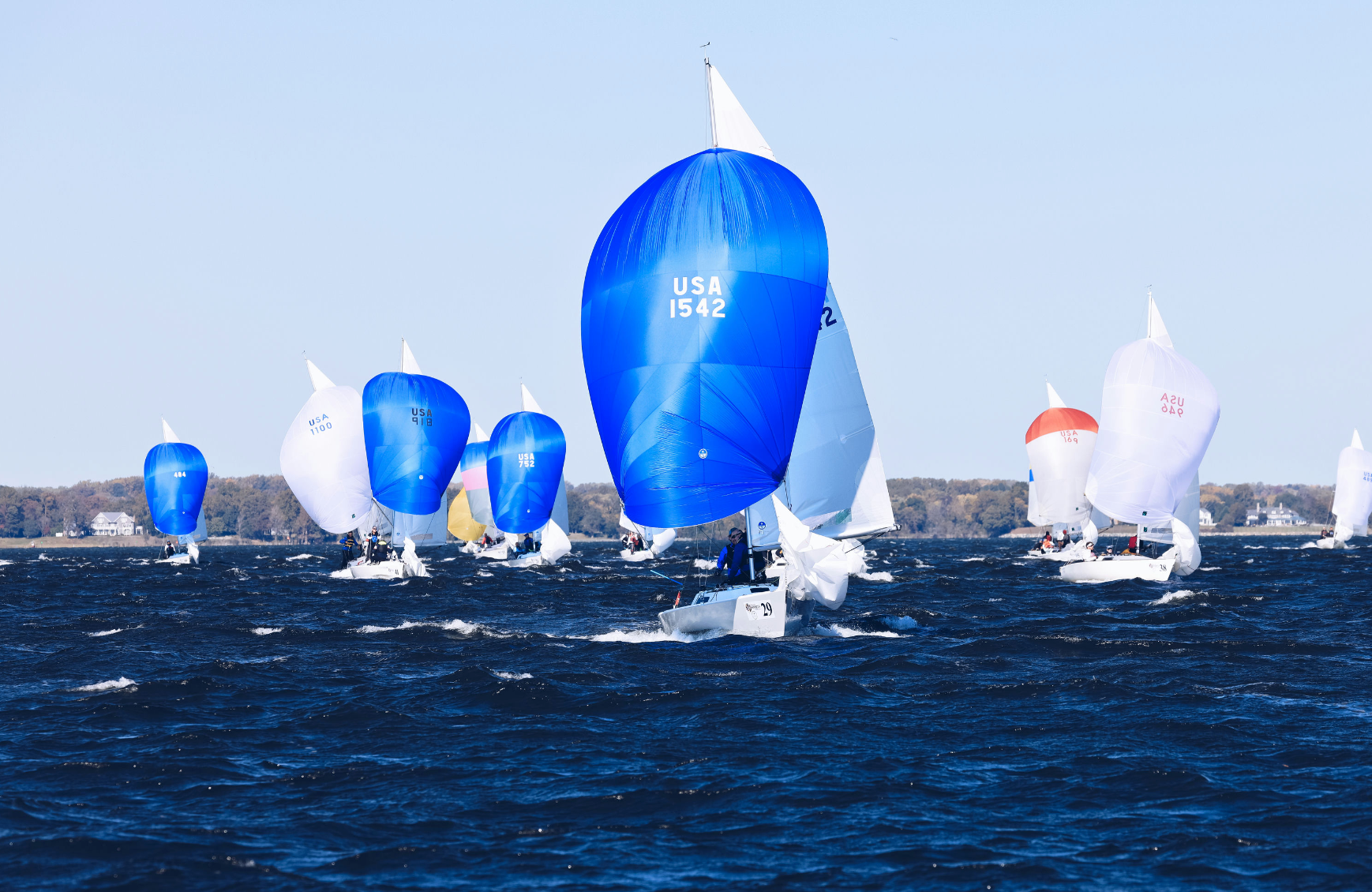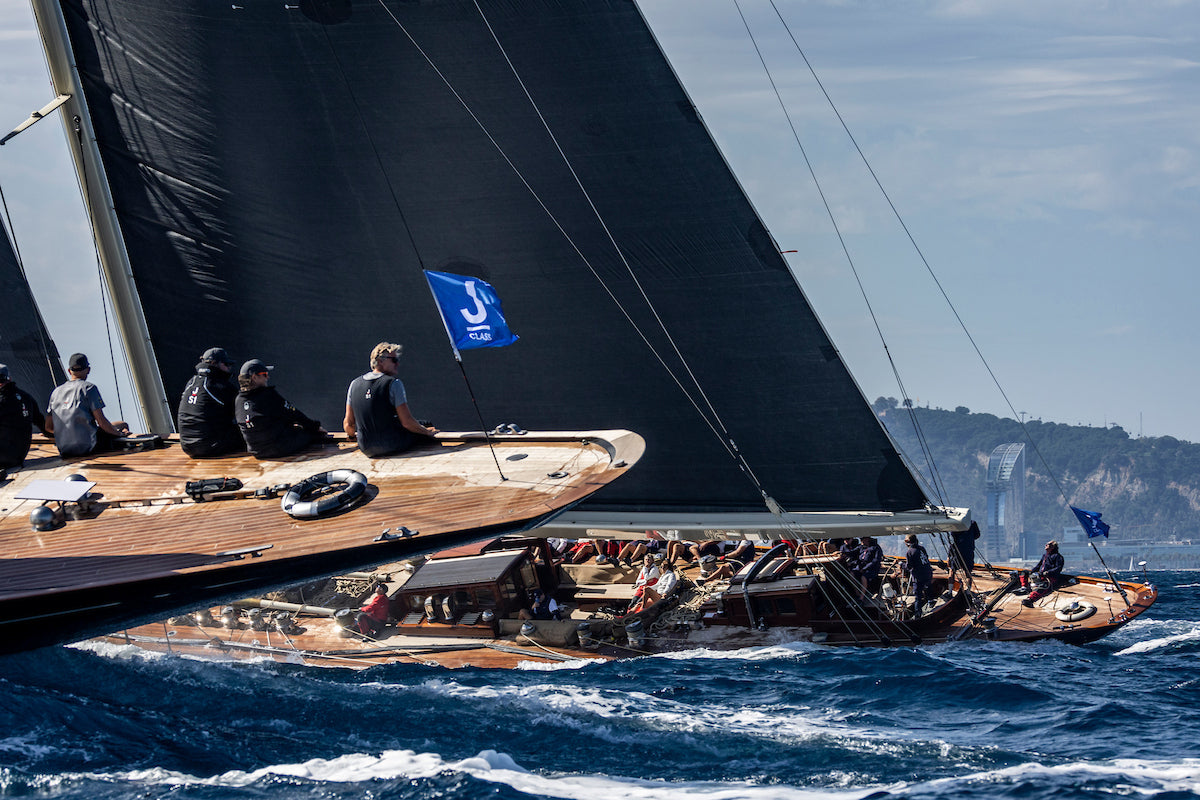SAIL PROFILE: VOLVO OCEAN RACE A3
SAIL PROFILE: VOLVO OCEAN RACE A3
What are those yellow sails on the Volvo Ocean Race boats? North Sails CEO, Dan Neri, explains what’s so unique about the Volvo Ocean 65 A3

The Volvo Ocean 65 A3 is unique because it is shaped like an Asymmetric Spinnaker, built like an upwind sail and furls like a genoa. The sail structure is 3Di Force, the lightest application of the 3Di composite sail product line.
3Di Force sails are made using prepreg tapes with a very high concentration of UltraPE material, co-mingled with Aramid filaments. The UltraPE provides high modulus and incredible toughness while the Aramid component resists compression and shrink. Like all 3Di sails, Force products are free of Mylar films which is one reason why the 3Di structures have extremely high strength to weight ratios. The newly developed 3Di Force product is so strong, and so reliable, that the Super-Maxi Comanche brought a single downwind Force sail for its recent Transpac record-setting run to Hawaii.
The yellow hue of the Force sails comes from the combination of UltraPE filaments (which are translucent, white) and Aramid filaments (which are gold). To keep the weight as low as possible, the A3 sails have very little branding so they show their true colors. All of the other sails in the Volvo Ocean Race 65 inventory are fully branded which masks the color of the sail structure. We are especially proud of the work done by the North Graphics team for this edition of the VOR. Our team painted 130 VOR sails over the course of just 6 months. We think the sails all look fantastic with the teams’ colors and logos.
All 3Di sails, including 3Di Force sails, are made on North Sails proprietary, full scale adjustable molds. However, a careful look at the photos will reveal a number of seams in the Force sails. The seams are required because these sails have very high camber ratios (remember, they are essentially spinnakers) and our molds are engineered for camber ratios found on upwind sails.* So the engineers at the 3D factories break each Force sail into sections for molding. Each section of the sail has camber in the range of an upwind sail, and when the sections are assembled the sail reaches the downwind camber dictated by the sail designer, with every square meter molded into a smooth 3-D surface. The seams are joined with a 2-part, ballistics grade Urethane adhesive. The width of each section joining seam is calculated to achieve a bond strength that is equal to the tensile of the 3Di composite in the area of the seam. The whole structure is in balance.

3Di Force sails are proving to be downwind game changers for ocean racing boats that sail at high enough speeds to pull the apparent wind forward of the beam. The sails are too inelastic, and marginally too heavy to be used on boats that sail with wider apparent wind angles and less pressure on the sail. That might change in the next few years as we move further down the path of learning what is possible with 3Di composite sail construction.
*A good question is, “Why don’t you make deeper molds to allow one piece downwind sails?” The answer has more to do with real estate than engineering or economics. Our 3Di molds position the sail structure in space. The mold space has X,Y and Z dimensions. The tools we use to construct the sail structure on the mold hang from a gantry which is positioned over the mold. The gantry has to fit inside the building. Our current molds have a Z-throw limited by the height of the gantry (if the mold is adjusted to a camber exceeding the Z-limit, the gantry tools will crash into it). The gantries just clear the roof. To get more Z-throw we either have to raise the roof or lower the floor. Both of those options are ruled out by nature and government. The floor of the factory cannot be lowered because in the high desert of Nevada, the water table is just below the surface of the ground. If we dig down, we will make a swimming pool. The height of the factory building is restricted by local zoning ordinances because we are located adjacent to an airport. If we built higher, the local glider pilots might have trouble clearing our roof!




























